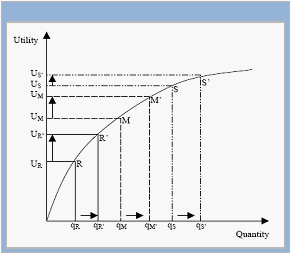

Project Team Rewards
Literature Review
24
Figure 5: Reward Utility vs. Quantity
Adopted from Rehu et al. (2005a)
3.4.7. Reward Extent
The question of ‘how much reward’ in the sense of ‘how much of the final salary
should be variable?’ is only relevant for incentives since recognition can be effective even
with a very small cash-value (see previous section). Reward proponents agree that if an
incentive should act as motivator it has to be significant (e.g. Armstrong 2000, Tinnirello
2001, and Harvard 2000). This can be explained by the expectancy theory, which states
that an incentive has to be valuable enough to justify
the effort (see Table 5, p. 15). In
practice, rewards often are 2 or 3% of the base salary (Torrington et al. 2002). Torrington
et al. (2002) state this is too little to motivate and too expensive for recognition. According
to research, incentives need to be at least 5 to 7% of the yearly salary to be effective
(Torrington et al. 2002). Lawler (in Armstrong 2000) suggests even 10 to 15% for
excellent work. Aguanno (2003) adds that too small incentives do not motivate and might
even be insulting. He continuous that too large rewards create jealousy and make receivers
think they are better than they actually are.
Figure 5: Utility vs. Quantity of Rewards
In general,
a higher incentive leads to
higher
extrinsic motivation
(Deci et al.
1974). Rehu et al. (2005a) agree but
emphasise that the motivational increase
becomes less with increasing rewards (see
Figure 5 for illustration and for an example
Appendix VII:
Example of Reward Utility
vs. Reward Quantity, p. 95). They conclude
a mix of different rewards may be more
attractive than one big reward with the
same total value.
If group rewards are given, it has to be asked how much of the rewards each member
gets. According to Armstrong (2002), it is most common to give all members the same
proportion. Alternatively, each member could get the same in terms of percentage of the
base salary. Cox & Tippett (2003) suggests that team members should decide how to
| Please note: All rights of this webpage are reserved. No part of this webpage may be reproduced, stored in a retrieval system, or transmitted in any form or by any means electronic, mechanic, photocopying, recording or otherwise without the prior written permission by the author. This html version of the book Project Team Rewards: Rewarding and Motivating your Project Team is not suitable for referencing since page numbers and layout may differ from the original book. Layout flaws are due to converting difficulties from the original file format to html and are not present in the paper copy of the book. |

